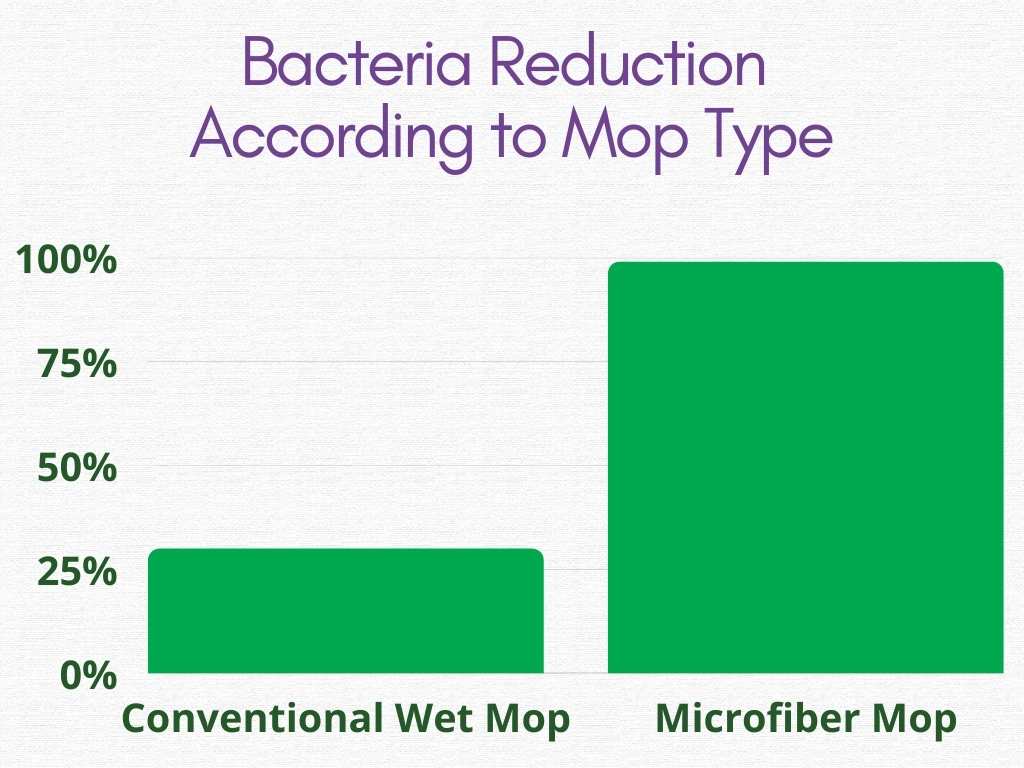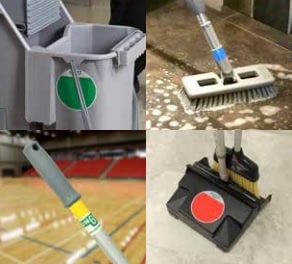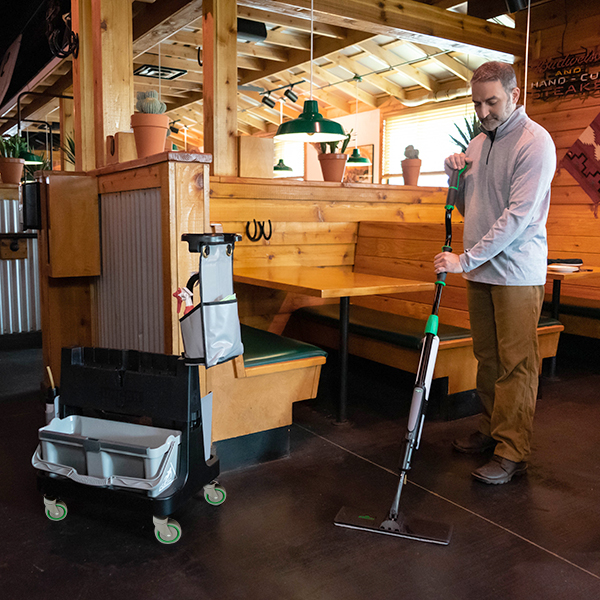Floors Are Dirtier Than You May Think
No matter how often you clean and mop floors, evidence shows that floors remain one of the biggest hiding places for bacteria and microbes. In addition to harboring potentially harmful contaminants, dirty floors can also have more profound impacts on your facility, including health risks for building occupants and damage to your overall brand image. Given the importance of both, efforts to prevent cross contamination between different areas of a building are an important initiative for any facility.
Innovative floor mops and floor care systems can play a significant role in stemming cross contamination. Although many scientific studies focus primarily on surfaces, recent evidence from the ISSA calls out the role that floors play in health and wellness:
- Bacteria from shoes is often brought in from the outdoors to the inside of buildings
- Shoes aren’t the only carriers of germs. For example, when someone puts a backpack or handbag on the floor and then carries it to another room, germs can travel along with it.
- When a worker or visitor coughs or sneezes, the droplets remain on the floor.
- Germs on the floor can have an impact on the quality of the air in a room.
- Movement between bathrooms and kitchens or communal areas can spread bacteria. Bathrooms are a known breeding ground for bacteria, carrying 2,000,000 bacteria per square inch.
By taking the proper steps to keep floors clean and prevent cross contamination, you can significantly reduce the risks associated with these common activities.
3 Ways to Avoid Cross Contamination
Traditional floor cleaning methods are no longer sufficient, especially in light of pandemic risks. Create a deeper level of cleanliness and safety by evaluating your current cleaning protocols, training staff and investing in the most effective floor cleaning tools.
#1: Commercial Floor Cleaning Equipment
Health issues created by improperly cleaned surfaces and floors can have a significant impact on company expenses and employee performance.
One study revealed that having a clean workspace resulted in a 12.5% decrease in sick days and reported increases in productivity. The flu alone is responsible for 200 million days of reduced productivity and 75 million days of absenteeism.
What’s more, any building occupant can notice if public spaces are dirty, which can ultimately impact your bottom line when it’s your clients or customers.
To ensure that your floors are doing their part to limit germ transmission, you can start by evaluating your mophead’s effectiveness. An alternative to traditional cotton mops, microfiber mops are scientifically proven to be a better alternative. A study conducted in conjunction with the EPA (Environmental Protection Agency) revealed that after cleaning with a conventional wet mop, bacteria was reduced by 30 percent, compared to 99 percent with a microfiber mop.

In addition to the material of the mophead, mop buckets should have two compartments to separate the clean and dirty solution. Without a dual bucket mopping system, you’re essentially cleaning with dirty solution after the first wring.
#2: Color Coded Cleaning Systems
For floor cleaning, a visual color coding system identifies the right tools for the right work zone so that workers can help improve sanitation. Distinct color-coding makes it easy to separate tools into their correct areas of use or cleaning task, reducing bacteria cross-contamination between high and low risk areas.
 Color-coded stickers and actual product color designate the floor cleaning zone. A common system looks something like this:
Color-coded stickers and actual product color designate the floor cleaning zone. A common system looks something like this:
- Red: High-contamination risk areas
- Blue: General areas for all-purpose cleaning
- Yellow: Less risky, low-traffic floor areas
- Green: Food preparation areas and break rooms
Whether referencing sticker color or the product color, best practice is to pair the appropriate cleaning tools together (i.e., dual bucket/mop handle/microfiber mop) when cleaning as well as storing tools. Mismatching these floor cleaning supplies can easily result in cross-contamination of soil and chemicals throughout the facility.
#3: Employee Training
Even with the most effective commercial cleaning products and equipment, and color coded labeling, people are still an integral part of the floor cleaning process and in helping to stop the spread of bacteria.
Keeping your business safe, productive, and open for business entails hiring qualified cleaning professionals, providing essential training and inspiring them to do the best job possible.
Simple steps can make a significant impact. For example:
- Ensure that your cleaning staff knows how to wash their hands properly and wear/change gloves, as needed.
- Train your team on storage protocols, so that dirty cleaning equipment is not left in spaces that were just cleaned.
- Train your team on proper equipment usage so that they are using the cleaning tools as designed for maximum effectiveness and productivity.
- Encourage custodial staff to stay home if they are sick.
- Hire enough people to allow different workers to clean specific areas thoroughly and as frequently as required.
- Reward team members for respecting and following cleaning protocols.
Upping Your Floor Cleaning Game to Minimize Cross Contamination
Not all commercial cleaning equipment manufacturers are the same. To ensure that your employees and visitors remain healthy and safe, make an investment in the latest innovative floor cleaning solutions and floor kits that provide optimum performance.
Unger is the leader in innovative cleaning tools and is continuously offering the latest innovations you need to keep yourself, your employees, and your building occupants safe and healthy.

